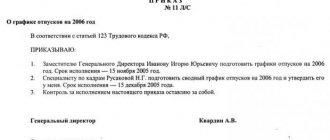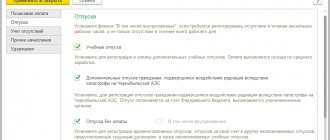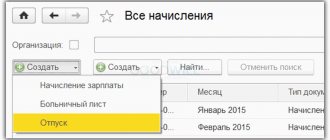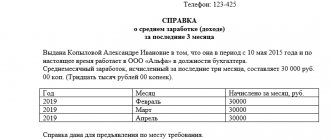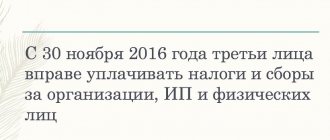Home / Labor Law / Personnel Management / Personnel Records
Back
Published: 06/25/2017
Reading time: 11 min
0
2865
Work with personnel is the destiny of any employer who has hired personnel to perform the necessary labor functions. According to current legislation, management must maintain strict records of personnel, which involves the preparation and maintenance of various documentation.
Companies, enterprises and organizations that have been present on the market for a long time have well-established office work. But new legal entities that have recently registered have to deal with personnel papers from scratch, which always causes certain difficulties.
- Who handles the paperwork?
- Steps and Step-by-Step Guides Required Documents
- Manager's registration
- Regulatory acts
- Accounting documents
- Labor books
- Registration of employees
Dear readers! To solve your problem, call hotline 8 or ask a question on the website. It's free.
Ask a Question
Personnel records: who is responsible for maintaining personnel records?
Personnel records management is carried out at every enterprise where hired labor is used. Where to start personnel records at an enterprise that has just registered? In a newly created enterprise, the management of personnel records from scratch usually falls on the shoulders of the manager. In order to secure such functions, the director, approved by the participants (shareholders) of the company, issues an order appointing himself responsible for maintaining personnel records.
Subsequently, when hiring a specialist who will be entrusted with personnel records in the organization, including work with personnel, he can be charged with the corresponding amount of work. This is done by issuing an order, which assigns responsibility for conducting this area of work to a specific employee. Also, these responsibilities are specified in the job description, which the employee reads upon signature.
Personnel records management in 2020, as before, must be carried out in compliance with the Labor Code, records management instructions and other legislative and local documents. Responsibility for personnel records in case of violation of the law and/or internal orders of management is assigned to the guilty person in the form of disciplinary sanctions.
Read about employee disciplinary liability here.
Steps and walkthroughs
The work of the personnel department and the activities of the legal entity as a whole are determined by the legislative and regulatory framework. Therefore, management needs to decide which documents will be required at the first stage.
There is a list of mandatory documents present in any organization and enterprise, as well as specific documentation necessary for the operation of individual enterprises, companies and organizations.
Such documents are called regulatory documents and are stored in the personnel department in a specially designated folder or safe deposit box.
Mandatory documents
There is a list of mandatory documents that are required by the employer already in the first stages of the activities of a legal entity. This:
- Various types of orders or basic administrative documents. Through orders, the hiring or dismissal of workers is formalized, and their movement is carried out within the same enterprise or organization. These documents relate to the employees' work history and for this reason are kept for 75 years.
- Also, orders related to personnel include registration of vacation periods, maternity leave, periods for child care, business trips, assignment of bonuses and other incentives, imposition of disciplinary sanctions, and so on. These orders are stored in archives for a little less time - on average three to five years.
- It is recommended to have two folders. One of them will contain orders for hiring and dismissal, as well as transfers of employees. And in the second, all other orders related to the working personnel.
- The next type of important documents are personal cards of employees, issued on the T-2 form. This type of document includes all the basic information for each employee. You can store cards in a separate folder or together with personal files (as an investment in personal files).
- Another mandatory document is a work book, which is created by the employer for each employee, and then executed and maintained in accordance with the requirements of the Government of the Russian Federation, reflected in a special resolution numbered 225.
- Books are issued within three days from the date of hiring a new employee to the vacant position. This document is not given to the employee until the very last day of work upon dismissal. Since the books are documents that are subject to strict accounting, a separate accounting book (journal) is created for them. Such a journal records the movement of labor and inserts to them. The shelf life of books and logbooks is 75 years.
- Another important document is the employment contract concluded between the employee and the employer, which indicates the start of work. Depending on the type of document (urgent or unlimited), its storage period varies. A fixed-term document is stored for at least five years, and an indefinite document remains in the archive for 75 years.
Also, for a young legal entity, it is necessary to assess workplaces for working conditions and their compliance with basic standards.
Documents related to this area are usually updated once every five years.
But the list of basic documents is not limited to this list! Additionally you will need:
- Draw up a staffing table taking into account working time standards for all categories of employees (for example, part-time workers, pregnant employees, disabled people).
- Approve a document reflecting the procedure for remuneration. This, for example, includes a fixed amount for part-time workers.
- Create a journal to record employees sent on business trips, and a separate journal to record orders issued.
- Develop and adopt internal regulations. For example, establish disciplinary punishment for absenteeism and tardiness.
Optional, but still necessary documents include: collective agreements, grounds for issuing orders (a separate book), various instructions for personnel and individual positions.
It is important to take into account all the nuances of commercial and industrial activities! For example, in hazardous production, it is necessary to reflect in local documents the procedure and standards for issuing products, as well as the payment of additional compensation. And if special clothing is required, the timing of its issuance to employees is fixed in a separate order or other administrative document.
If software is required for the functioning of accounting or other departments, a list of required programs is determined.
When the entire list of documents has been established, it is necessary to display the order of their maintenance in a special Regulation on record keeping. This is also an optional document, however, its presence will greatly facilitate the task for personnel department employees - they will know what exactly and when management requires of them.
Manager's registration
A new legal entity requires an official leader. Typically, the employer hires a CEO. This employee is entrusted with hiring workers for vacant positions and concluding contracts with people.
The position of director can be obtained on a competitive basis or through a general meeting at which the founders approve the selected candidate.
If the director is also the only founder, a separate agreement is still concluded with him (the founder hires himself). The same rule applies to entrepreneurs - they sign the contract both on their own behalf and on behalf of the hired manager.
After the conclusion of the contract, an order is necessarily issued - this is a mandatory procedure for hiring a director.
Regulatory acts
After hiring a director, the number of positions (jobs) is determined.
necessary for the normal functioning of an enterprise, company or organization. Based on the obtained figures and taking into account the production cycle, as well as other features of the legal entity’s activities, a staffing table is developed.
To prepare this document, it is customary to use a unified form, although this is not a mandatory requirement and, at the request of the employer, additional columns can be added to the document.
All positions are listed in the document, starting with the main one (director) and ending with staff units related to support staff. For each required position, the required number of staff units, their salary and the required allowances are fixed.
A work schedule is then created that includes the work schedule for all personnel.
If it is intended to be divided into shifts, the schedule for each of them is written out in detail and in full.
This document also briefly indicates the basic requirements for the appearance of employees, their behavior, compliance with routines, and so on.
At the next stage, the development of a standard contract form is carried out, concluded when hiring a new employee for an open position. The document must take into account all the basic requirements of labor legislation, as well as the provisions of local documents. Typically, the development of this document is carried out by the employer’s lawyers or hired specialists.
The document includes the following main points (additional ones can be added if they do not contradict the Labor Code):
- The name of the legal entity, its address, telephone number, last name, first name and patronymic of the authorized representative, and his position (usually director).
- Passport details of the hired employee. There is a separate paragraph for them in the header of the document.
- The position of the employee, the type of his contract (fixed-term or open-ended), indication of the type of workplace (main or additional).
- A detailed list of basic job functions and responsibilities. You don't have to give a complete list! It is enough to refer to the instructions approved for a specific position.
- Information on remuneration for work, the calculation of additional compensation and benefits, the procedure for providing vacation periods.
- Information on work schedules, additional payments for overtime work.
- List of grounds for termination of the document and other additional information.
- Signatures of both parties, their details, wet seal of the legal entity.
Accounting documents
To record documentation, special books (magazines) and folders are created. Each of the magazines is bound with mandatory page numbering. A square of white paper is glued to the firmware on the back of the magazine, on which the authorized person puts his signature and the date of inspection (manager or other official).
The cover of the journal (book) indicates the full name of the legal entity and the start date of maintaining this accounting document.
Labor books
To maintain labor records, a responsible employee is appointed by a separate order, who will fill out and store the books of all employees.
Since these are strict reporting documents, their movement is controlled through a separate accounting journal. And storage is carried out in a separate safe with the obligatory locking of this storage with a padlock.
The person assigned to maintain it monitors the timely and correct filling out of the books, and, if necessary, makes the necessary corrections to the documents, certifying them with his own signature. The same employee controls the issuance of books upon dismissal (the dismissed employee must sign in the accounting journal, confirming receipt of the work permit).
Time-based wages - what is it and when is it profitable to use it? Find out more about salary transactions in our material!
You can find out how sick leave is paid if it falls on a weekend by following the link.
Instructions for personnel records management 2020 - download or develop yourself?
The instructions for personnel records management have not been normatively approved, therefore, for maintaining personnel records and document flow, it is recommended to follow GOST R 7.0.8-2013, approved by Order of Rosstandart dated October 17, 2013 No. 1185-st and put into effect on March 1, 2014.
There is no single template for instructions on personnel records and office work, but there are personnel records from scratch step by step with recommended stages for organizing personnel document flow and accounting in an enterprise. Thanks to this step-by-step plan, it is easy to identify the sequence of actions and navigate the amount of work.
We recommend that you read the step-by-step instructions below that will help you organize HR records from scratch. In the future, based on the material studied, you can develop your own action plan and follow it.
What does a step-by-step instruction on HR administration look like?
So, let’s move on to consider step-by-step instructions for HR administration from scratch. We will provide a detailed step-by-step plan that will allow you to create your own personnel service, starting with the registration of the first employee at the enterprise - the director. And therefore it is important from the very beginning of the company’s activities to streamline personnel records.
Stages of organizing personnel records at an enterprise:
- Creation of a regulatory and information base.
To begin with, it is worth deciding which regulations will be in demand in the work of a personnel officer. Of course it is:
- Labor Code - it contains the main points on the regulation of working hours (Chapters 15–16, 22), the duration and frequency of vacations (Chapter 19), the calculation of wages (Chapter 21), and outlines the basic rights and obligations of employees and employers;
- Resolution of the State Statistics Committee dated January 5, 2004 No. 1 - all forms of primary documents required for personnel records are presented here; their use today is not mandatory, but is still desirable, since they take into account all the necessary columns and details; If desired, any user can make changes to the form data, retaining only the required details;
- government decree No. 225 dated April 16, 2003, which will help in working with work books; this document is basic for the employee, as it confirms his work experience;
ATTENTION! Since 2020, electronic work books have been introduced. Read more about them in the material “How to switch to electronic work books from January 1, 2020.”
- manual on maintaining military records at enterprises, approved by the General Staff of the Russian Armed Forces on April 11, 2008 - these recommendations will help personnel employees get comfortable with the mandatory maintenance of military records of employees at enterprises;
- order of Rosstandart dated 17.10.2013 No. 1185-st, resolution of Gosstandart dated 03.03.2003 No. 65-st (this resolution is valid until 01.07.2017, from 01.07.2017 GOST R 7.0.97-2016, approved by order of Rosstandart dated 08.12.2016, applies No. 2004-st), order of the Federal Archive of December 20, 2019 No. 236 and government decree of June 15, 2009 No. 477 - these documents will help you find out what standards exist in Russian office work and archiving.
Each employee responsible for personnel records must be provided with access not only to these regulations, but also to other legislative acts that may be required in the process of work. Also, the personnel officer must monitor the latest changes and updates in regulations. To do this, it is necessary either to ensure independent monitoring of legislation or to purchase packages of access to various information databases.
In order to ensure a high level of personnel records management in enterprises with a large staff, special HR software may also be required to organize a personnel management system and maintain personnel records.
You can read about one of these programs in our article “Checking personalized accounts online (free)” .
- Familiarization with the company's statutory documentation.
The charter must detail the conditions for hiring a director (general director, board of directors)—the executive body of the company. Also, this constituent documentation specifies the basic conditions for the duration of the manager’s work. In addition, the personnel officer must be aware of the latest changes made to the charter in case the owners of the company decide on personnel issues.
- Applying for a manager's job.
The first employee to be registered at a newly created enterprise is, of course, the manager. Thus, on the basis of a protocol approved by the owners of the company, an order is issued indicating the date on which the manager assumes his duties. This will be the first personnel order issued at the enterprise.
How to write a job application, see here.
In the future, the personnel officer must ensure the chronological order of issued orders. When checking working conditions and personnel issues, regulatory authorities pay close attention to the numbering of orders so that there are no cases where orders are issued retroactively.
- Drawing up a list of personnel documents that will be involved in personnel records management at the enterprise.
We list the main documents that are involved in personnel records in any enterprise with hired employees:
- rules regarding intra-organizational labor regulations;
- personnel structure of the organization;
- staffing schedule;
- vacation schedule;
- documents related to the protection of personal data of employees.
Mandatory documents also include primary accounting documents created for each employee, as well as registers such as:
- labor contracts;
- a book on recording the movement of labor books;
- a book for recording forms of work record books and the forms of these documents themselves, which are often issued at the enterprise when an employee enters his first place of work;
- work time sheet;
- personal cards of employees;
- personnel orders, which are usually stored together with the grounds for their issuance (applications, official (reports) notes, acts, etc.);
- job descriptions and other documents;
- log of inspections by regulatory authorities.
The employment contract form is available on our website - “Unified Form No. TD-1 - Employment Contract” .
The following documents may also be published:
- collective agreement;
- provisions on bonuses, certification, trade secrets, etc.
- Approval of personnel documents and their forms by the head of the enterprise.
If there are any comments on the documentation form, the personnel officer must eliminate them and re-approve the document forms. Documents that affect not only the maintenance of personnel records, but also accounting, must also be reflected in the accounting policies of the enterprise.
All necessary information on personnel records is available on our website in the “Salaries and Personnel” .
- Appointment of a person responsible for maintaining and recording work books.
This may be one person responsible for maintaining personnel records, or a separate employee may be designated who is responsible for storing and recording issued and received work books. A corresponding order is issued on the appointment of a responsible person.
- Hiring employees.
This is the final stage in maintaining personnel records from scratch. Now, for each employee hired, a package of personnel documentation is created, usually including an employment contract, a hiring order, and a job description; a work book is accepted/issued, a personal card is filled out, a non-disclosure agreement of personal data and other documents are signed.
Then other personnel documents are drawn up on standardizing the working day, calculating and paying wages, accounting for vacations, processing sick leave, business trips, etc.
You can learn about the storage period for personnel documents from our article “What is the storage period for personnel documents in an organization?” .
And about the procedure for their destruction, read the article “Destruction of documents with expired storage periods (act)” .
BIBLIOGRAPHY
1. Abramova, N. Legal office work: Textbook for bachelors / N. Abramova. - M.: Prospekt, 2020. - 224 p. 2. Andreeva, V.I. Office work: organization and management / V.I. Andreeva. - M.: KnoRus, 2020. - 234 p. 3. Andropova, I.Yu. Personnel records management: Documentation: Textbook / I.Yu. Andropova. - M.: Academia, 2020. - 320 p. 4. Andropova, I.Yu. Personnel records management: Documentation: Textbook / I.Yu. Andropova. - M.: Academy, 2008. - 208 p. 5. Basakov, M.I. Office work: Lecture notes / M.I. Basakov. — Rn/D: Phoenix, 2010. — 192 p. 6. Basakov, M.I. Office work (documentation support for management based on GOST R 6.30-2003): Textbook for students of educational institutions of secondary vocational education / M.I. Basakov. - M.: Dashkov and K, 2012. - 348 p. 7. Basakov, M.I. Documentation support for management (Office management): Textbook / M.I. Basakov. — Rn/D: Phoenix, 2013. — 350 p. 8. Basakov, M.I. Office work: Textbook / M.I. Basakov, O.I. Zamytskova. — Rn/D: Phoenix, 2013. — 376 p. 9. Basakov, M.I. Documentation support for management (paperwork): textbook / M.I. Basakov. — Rn/D: Phoenix, 2020. — 83 p. 10. Basovskaya, E.N. Office work: Textbook / E.N. Basovskaya. - M.: Forum, 2012. - 256 p. 11. Basovskaya, E.N. Office work: Textbook / E.N. Basovskaya, T.A. Bykova, L.M. Vyalova, E.M. Emysheva. - M.: Forum, 2012. - 256 p. 12. Bykova, T.A. Documentation support for management (paperwork): Textbook / T.A. Bykova, T.V. Kuznetsova, L.V. Sankina. - M.: Infra-M, 2020. - 180 p. 13. Bykova, T.A. Office work: Textbook / T.A. Bykova, L.V. Sankina, L.M. Vyalova. - M.: Infra-M, 2020. - 83 p. 14. Bykova, T.A. Office work: Textbook / T.A. Bykova, L.M. Vyalova. - M.: Infra-M, 2013. - 364 p. 15. Bykova, T.A. Office work: Textbook / T.A. Bykova, L.M. Vyalova. - M.: Infra-M, 2012. - 364 p. 16. Bykova, T.A. Documentation support for management (paperwork): Textbook / T.A. Bykova, T.V. Kuznetsova, L.V. Sankina. - M.: NIC Infra-M, 2013. - 304 p. 17. Bykova, T.A. Office work: Textbook / T.A. Bykova, L.M. Vyalova, L.V. Sankina; Ed. T.V. Kuznetsova. - M.: NIC Infra-M, 2013. - 364 p. 18. Vyalova, L.M. Personnel records management: Textbook / L.M. Vyalova. - M.: Academy, 2007. - 240 p. 19. Vyalova, L.M. Personnel records management. Textbook / L.M. Vyalova. - M.: Academia, 2020. - 160 p. 20. Gvaeva, I.V. Office work: educational reference book / I.V. Gvaeva. - Minsk: TetraSystems, 2011. - 224 p. 21. Gugueva, T.A. Confidential paperwork: Textbook / T.A. Gugueva. - M.: Alfa-M, Scientific Research Center Infra-M, 2012. - 192 p. 22. Kabashov, S.Yu. Record keeping and archiving in terms and definitions / S.Yu. Kabashov. - M.: Flinta, 2009. - 296 p. 23. Kabashov, S.Yu. Record keeping and archiving in terms and definitions: Textbook / S.Yu. Kabashov. - M.: Flinta, 2009. - 296 p. 24. Kabashov, S.Yu. Record keeping and archiving in terms and definitions: Textbook / S.Yu. Kabashov, I.G. Asfandiyarova. - M.: Flinta, Nauka, 2009. - 296 p. 25. Kirsanova, M.V. Modern office work: Textbook / M.V. Kirsanova. - M.: NIC Infra-M, 2012. - 312 p. 26. Kozlov, N.V. Computer office work and work with office equipment. Training course / N.V. Kozlov. - St. Petersburg: Science and Technology, 2007. - 304 p. 27. Kugusheva, T.V. Office work: textbook / T.V. Kugusheva. — Rn/D: Phoenix, 2018. — 96 p. 28. Kugusheva, T.V. Office work: textbook / T.V. Kugusheva. — RnD: Phoenix, 2020. — 296 p. 29. Kuznetsov, D.L. Personnel records management (legal basis): Practical guide / Yu.P. Orlovsky, D.L. Kuznetsov, I.Ya. Belitskaya, Yu.S. Koryakina. - M.: Infra-M, Contract, 2012. - 239 p. 30. Kuznetsov, D.L. Personnel records management (legal basis): Practical guide / Yu.P. Orlovsky, D.L. Kuznetsov, I.Ya. Belitskaya, Yu.S. Koryakina. - M.: Infra-M, Contract, 2013. - 239 p. 31. Kuznetsov, I.N. Documentation support for management and office work: Textbook for bachelors / I.N. Kuznetsov.. - M.: Yurayt, Publishing House Yurayt, 2013. - 576 p. 32. Kuznetsov, I.N. Documentation support for management. Document flow and office work: Textbook and workshop / I.N. Kuznetsov. - Lyubertsy: Yurayt, 2020. - 477 p. 33. Kuznetsov, I.N. Office work: Educational and reference manual / I.N. Kuznetsov. - M.: Dashkov and K, 2013. - 520 p. 34. Kuznetsov, I.N. Documentation support for management and office work: Textbook for bachelors / I.N. Kuznetsov. - M.: Yurayt, Publishing House Yurayt, 2012. - 576 p. 35. Kuznetsov, I.N. Office work: Educational and reference manual / I.N. Kuznetsov. - M.: Dashkov and K, 2020. - 520 p. 36. Kunyaev, N.N. Confidential office work and secure electronic document management: Textbook / N.N. Kunyaev. - M.: Logos, 2020. - 500 p. 37. Lenkevich, L.A. Office work: Textbook / L.A. Lenkevich. - M.: Academia, 2013. - 16 p. 38. Lenkevich, L.A. Office work: A textbook for students of primary vocational schools / L.A. Lenkevich. - M.: IC Academy, 2009. - 256 p. 39. Leonov, V. Personnel records management on a computer / V. Leonov. - M.: Eksmo, 2011. - 368 p. 40. Lovcheva, M.V. Personnel management: theory and practice. Office work in the personnel service: Educational and practical guide / M.V. Lovcheva. - M.: Prospekt, 2013. - 80 p. 41. Mikhailov, Yu.M. Office work for non-state companies / Yu.M. Mikhailov. - M.: Alfa-Press, 2008. - 288 p. 42. Mikhailov, Yu.M. Personnel records management. How to correctly and quickly draw up the most important personnel documents / Yu.M. Mikhailov. - M.: Alfa-Press, 2014. - 224 p. 43. Mikheeva, E.V. Computer office work in accounting. Textbook / E.V. Mikheeva. - M.: Academia, 2020. - 96 p. 44. Mikheeva, E.V. Computer paperwork in accounting: Textbook / E.V. Mikheeva. - M.: Academia, 2020. - 1344 p. 45. Novikov, E.A. Office work in the personnel service. / E.A. Novikov. - M.: Omega-L, 2020. - 79 p. 46. Panasenko, Yu.A. Office work: documentation support for management: Textbook / Yu.A. Panasenko. - M.: IC RIOR, NIC Infra-M, 2013. - 112 p. 47. Panasenko, Yu.A. Office work: documentation support for management: Textbook / Yu.A. Panasenko. - M.: Rior, 2020. - 32 p. 48. Podobed, M.A. Office work in executive authorities / M.A. Podobed. - M.: Prior, 2002. - 224 p. 49. Pozhnikova, N.M. Workshop on the subject “Documents, correspondence and office work”: A textbook for beginners. prof. education / N.M. Pozhnikova. - M.: IC Academy, 2012. - 192 p. 50. Pozhnikova, N.M. Workshop on the subject “Documents, correspondence and office work”: Textbook / N.M. Pozhnikova. - M.: Academy, 2020. - 224 p. 51. Pozhnikova, N.M. Workshop on the subject “Documents, correspondence and office work”: Textbook / N.M. Pozhnikova. - M.: Academia, 2020. - 208 p. 52. Pustozerova, V.M. Office work in banks. Normative acts / V.M. Pustozerova. - M.: Prior, 2002. - 160 p. 53. Rogozhin, M. Handbook of the person responsible for office work / M. Rogozhin. - M.: Prospekt, 2020. - 128 p. 54. Rogozhin, M.Yu. Office work in the personnel service: Educational and practical guide / M.Yu. Rogozhin. - M.: Prospekt, 2013. - 784 p. 55. Sologub, O.P. Office work: drafting, editing and processing documents. Tutorial. / O.P. Sologub. - M.: Omega-L, 2020. - 64 p. 56. Sologub, O.P. Office work: drafting, editing and processing of documents: Textbook / O.P. Sologub.. - M.: Omega-L, 2013. - 207 p. 57. Stenyukov, M.V. VPS: Office work. Lecture notes (pocket format) / M.V. Stenyukov. - M.: Prior, 2004. - 128 p. 58. Stenyukov, M.V. VPS: Document management and office work. KL. / M.V. Stenyukov. - M.: A-Prior, 2007. - 176 p. 59. Stenyukov, M.V. Office work. Organization of documentation support for the enterprise. / M.V. Stenyukov. - M.: A-Prior, 2007. - 176 p. 60. Stenyukov, M.V. Personnel records management in 2008 / M.V. Stenyukov, V.M. Pustozerova. - M.: A-Prior, 2008. - 128 p. 61. Tatarnikov, M. Records management in medical organizations / M. Tatarnikov. - M.: Geotar-Media, 2020. - 240 p. 62. Trusov, A. Accounting, tax accounting and office work on Excel for small businesses / A. Trusov. - St. Petersburg: Peter, 2008. - 224 p.
Results
The organization of personnel records management, as a rule, falls on the shoulders of the personnel service. Our article will help the HR inspector understand the intricacies of preparing personnel documents and logs.
Sources:
- Labor Code of the Russian Federation
- Resolution of the State Statistics Committee of the Russian Federation dated January 05, 2004 N 1 “On approval of unified forms of primary accounting documentation for recording labor and its payment”
- order of Rosarkhiv dated December 20, 2019 No. 236
You can find more complete information on the topic in ConsultantPlus. Full and free access to the system for 2 days.


